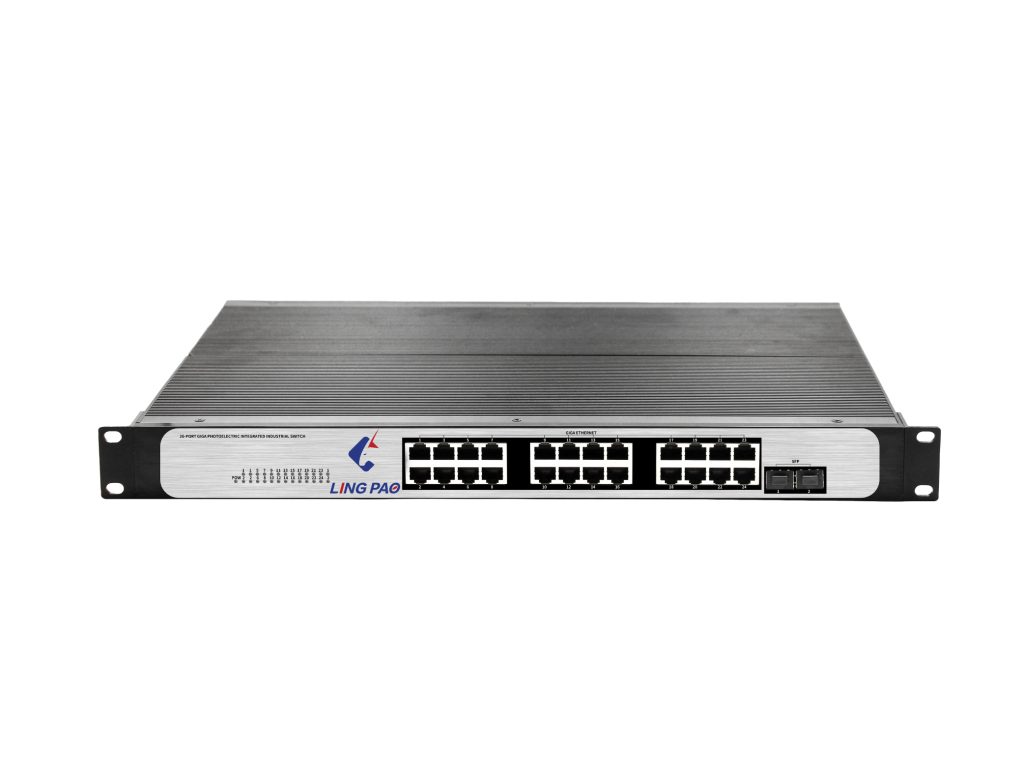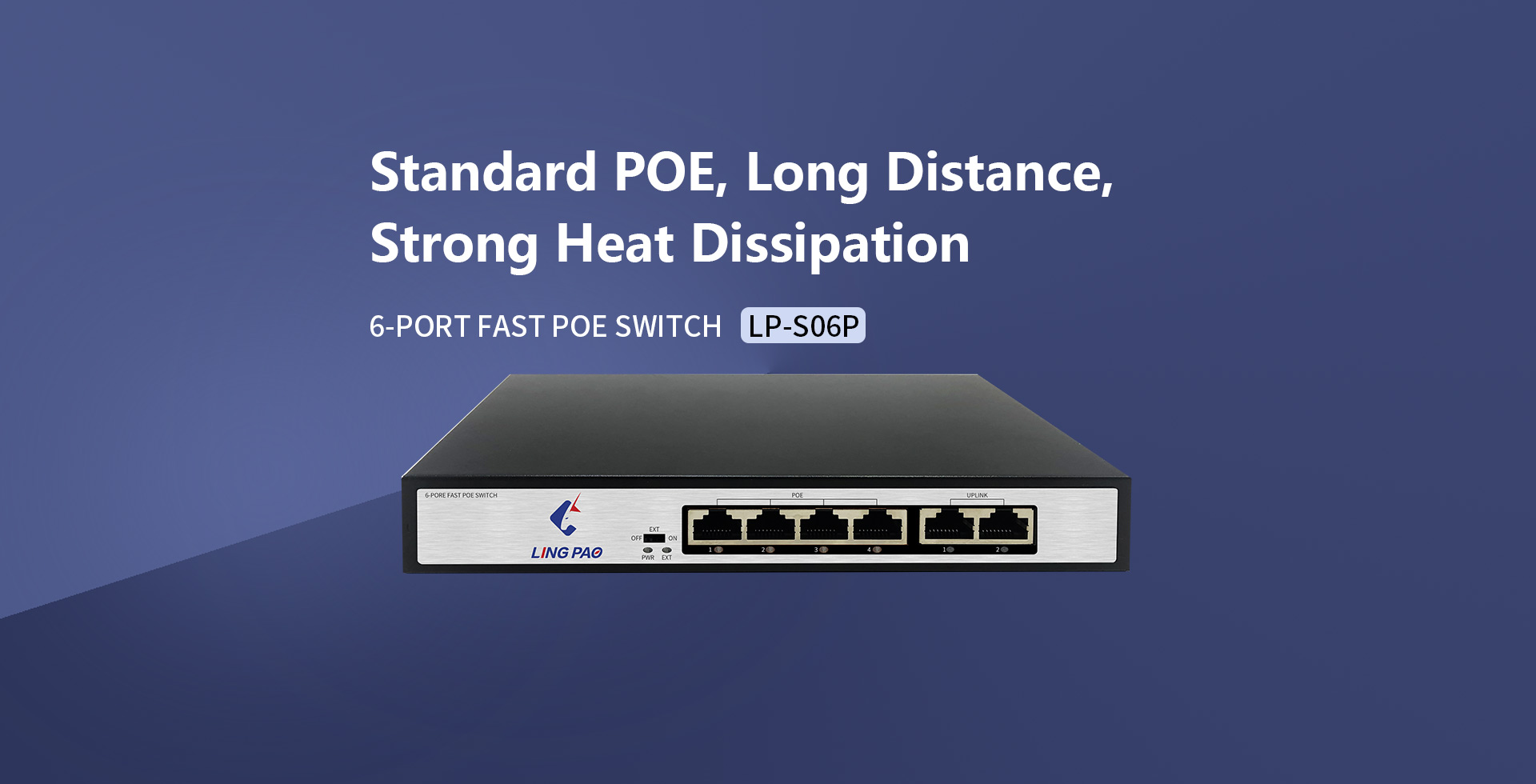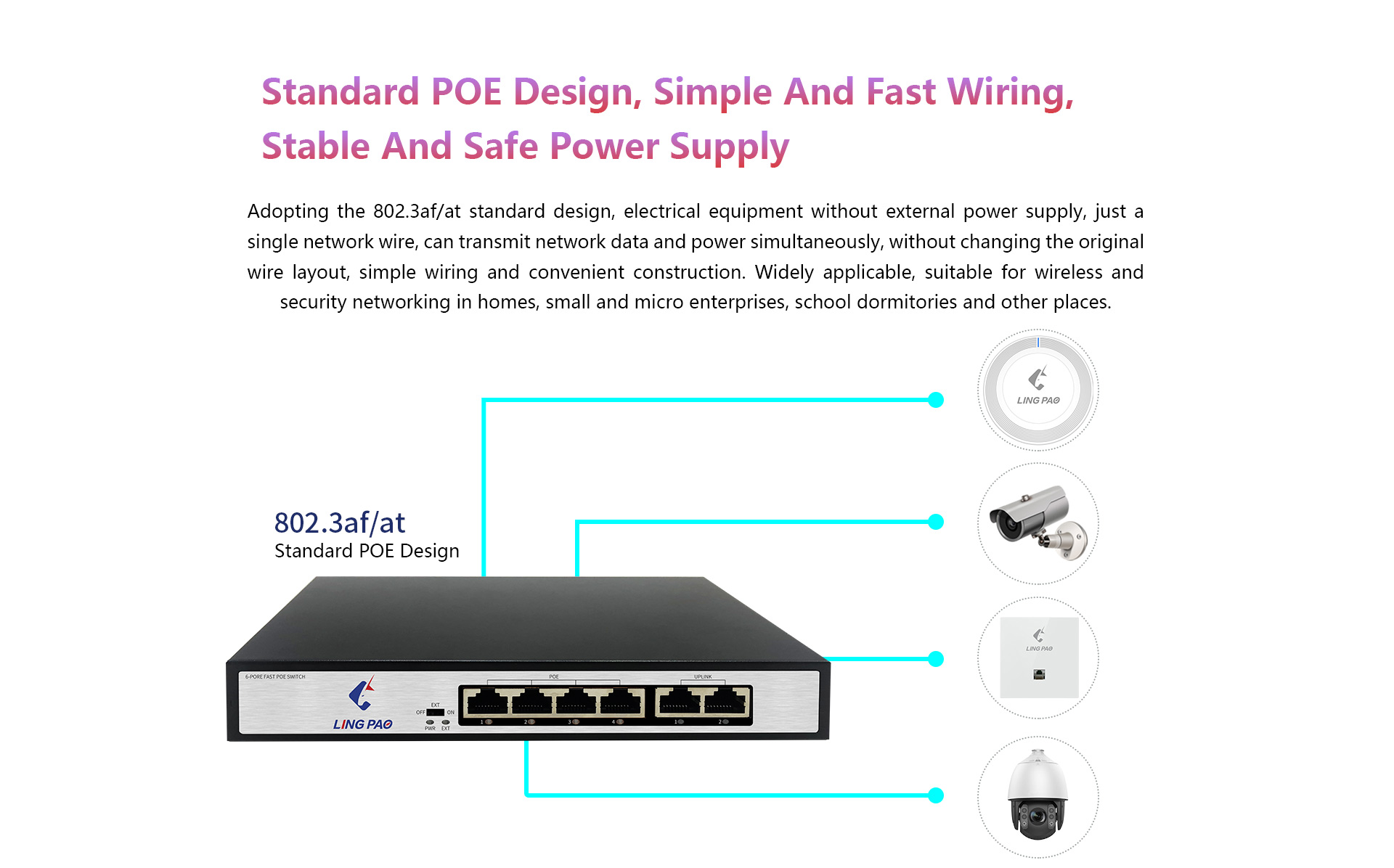2.5G switches are a type of network switch that operate at a data rate of 2.5 Gigabits per second (Gbps). They are also known as Multi-Gigabit Ethernet switches or 2.5 Gigabit Ethernet switches. These switches are growing in popularity due to the increasing demand for faster data transfer speeds in modern networks.
In this guide, we will explore everything you need to know about 2.5G switches, including their features, benefits, and uses.
Features of 2.5G switches
- Speed: As mentioned earlier, 2.5G switches operate at a data rate of 2.5Gbps, which is five times faster than the traditional Gigabit Ethernet switches. This increased speed allows for faster data transfer, making it ideal for networks that require high bandwidth.
- Compatibility: 2.5G switches are backwards compatible with existing network infrastructure, meaning they can work with Cat5e and Cat6 cables, which are commonly used in Gigabit Ethernet networks. This makes it easier and more cost-effective for businesses to upgrade their network speeds.
- Power over Ethernet (PoE) support: Many 2.5G switches come with PoE support, which allows for power to be delivered to connected devices, such as IP phones, wireless access points, and surveillance cameras, through the network cable. This eliminates the need for separate power supplies and reduces clutter in network setups.
- Port configuration: 2.5G switches come in a variety of port configurations, such as 8, 16, 24, or 48 ports. This allows businesses to choose the number of ports based on their specific networking needs. Additionally, some 2.5G switches offer a mix of 2.5G and 10G ports, providing more flexibility in network design.
- Smart features: Many 2.5G switches come equipped with advanced features such as Quality of Service (QoS), Virtual Local Area Network (VLAN) support, and link aggregation to improve network performance and management. These smart features make it easier to prioritize and control network traffic, making 2.5G switches an ideal choice for businesses with high network traffic.
Benefits of 2.5G switches
- Faster speeds: The main benefit of 2.5G switches is their increased speed, which allows for faster data transfer compared to traditional Gigabit Ethernet switches. This is especially beneficial for businesses that require high bandwidth for data-intensive applications, such as video conferencing, file sharing, and virtual desktops.
- Cost-effective: Unlike 10G switches, which require costly Cat6a or Cat7 cables, 2.5G switches can use existing Cat5e or Cat6 cables, making it a more cost-effective option for businesses looking to upgrade their network speeds. Additionally, the compatibility with existing infrastructure eliminates the need for costly network upgrades.
- Future-proofing: With the rise of new technologies and data-intensive applications, network speeds are constantly increasing. By investing in 2.5G switches now, businesses can future-proof their network infrastructure and avoid the need for frequent upgrades.
- Flexibility: As mentioned earlier, 2.5G switches offer a mix of 2.5G and 10G ports, providing businesses with more flexibility in network design. They can use 2.5G ports for devices that require higher bandwidth and 10G ports for devices that need even faster speeds, such as servers.
Uses of 2.5G switches
- Small and medium-sized businesses (SMBs): 2.5G switches are an ideal choice for small and medium-sized businesses that require faster network speeds but do not have the budget for expensive 10G switches. They can provide the necessary bandwidth for data-intensive applications at a more affordable cost.
- Home networks: With the rise of smart homes and the increasing number of devices connected to home networks, 2.5G switches can provide faster speeds for streaming and gaming, making them a suitable option for home networks.
- Education institutions: Schools and universities often have high network traffic due to the large number of students and faculty using the network. 2.5G switches can provide the necessary bandwidth for online learning, video conferencing, and other data-intensive applications.
- High-density environments: 2.5G switches are also suitable for high-density environments, such as stadiums, conference centers, and hotels, where a large number of devices need to be connected without sacrificing network performance.
In conclusion, 2.5G switches are a cost-effective solution for businesses and individuals looking to upgrade their network speeds without breaking the bank. With their ability to provide faster speeds, compatibility with existing infrastructure, and advanced features, 2.5G switches are a valuable tool for modern networks. As technology continues to advance and the demand for faster network speeds grows, 2.5G switches will play a crucial role in meeting these needs.

FAQ Guide Let’s continue!
1.What is the 2.5G port used for?
2.How fast is 2.5G Ethernet?
3.What does 2.5G mean on router?
4.What is 2.5G Ethernet requirements?
5.What does 2.5G LAN mean?
6.How many port solutions in 2.5g switch?
7.How does 2.5G switch work?
8.Do I need 2.5 GB switch?
9.How does 2.5g managed switch work?
10.What is 2.5G switch?
1.What is the 2.5G port used for?
The 2.5G port is used for high-speed data transfer, typically in networking equipment such as routers, switches, and network interface cards. It allows for data transfer speeds of up to 2.5 gigabits per second, making it suitable for applications that require high bandwidth, such as video streaming, online gaming, and large file transfers. It is also commonly used in enterprise networks for connecting servers, storage devices, and other high-performance devices.
2.How fast is 2.5G Ethernet?
2.5G Ethernet has a maximum speed of 2.5 gigabits per second (Gbps), which is equivalent to 312.5 megabytes per second (MBps). This is approximately 2.5 times faster than traditional 1G Ethernet, which has a maximum speed of 1 Gbps.
3.What does 2.5G mean on router?
2.5G on a router refers to the maximum speed or bandwidth that the router can support. It is typically used to describe routers that can support speeds up to 2.5 gigabits per second (Gbps). This is faster than traditional routers, which typically support speeds up to 1 Gbps. 2.5G routers are often used in high-speed internet connections, such as fiber optic or cable connections, to provide faster and more reliable internet access. They are also commonly used in homes and small businesses to support multiple devices and heavy internet usage.

4.What is 2.5G Ethernet requirements?
2.5G Ethernet is a type of Ethernet technology that supports data transfer speeds of up to 2.5 gigabits per second (Gbps). It is also known as 2.5GBASE-T or 2.5GBASE-TX.
The requirements for 2.5G Ethernet include:
- Network Interface Card (NIC): A 2.5G Ethernet NIC is required to connect a device to a 2.5G Ethernet network. The NIC must support the 2.5GBASE-T or 2.5GBASE-TX standard.
- Cabling: 2.5G Ethernet can be transmitted over Category 5e, Category 6, or Category 6a cabling. However, Category 6a cabling is recommended for optimal performance.
- Switches: 2.5G Ethernet switches are required to connect multiple devices on a 2.5G Ethernet network. These switches must support the 2.5GBASE-T or 2.5GBASE-TX standard.
- Power over Ethernet (PoE): If PoE is required, the switches and NICs must support the PoE+ standard, which provides up to 30 watts of power.
- Network infrastructure: The network infrastructure, including routers and firewalls, must support 2.5G Ethernet.
- Operating system support: The operating system of the devices connected to the 2.5G Ethernet network must support 2.5G Ethernet.
- Network management: Network management tools must support 2.5G Ethernet for monitoring and troubleshooting purposes.
- Compatibility: 2.5G Ethernet is backward compatible with 1G Ethernet, so devices with 1G Ethernet NICs can still connect to a 2.5G Ethernet network.
- Distance limitations: The maximum distance for 2.5G Ethernet is 100 meters over Category 5e or Category 6 cabling, and 100 meters over Category 6a cabling.
- Power consumption: 2.5G Ethernet requires more power than 1G Ethernet, so devices connected to a 2.5G Ethernet network must have sufficient power supply.
5.What does 2.5G LAN mean?
2.5G LAN refers to a type of Ethernet network connection that has a maximum data transfer rate of 2.5 gigabits per second (Gbps). This is faster than traditional 1G LAN connections, but slower than 10G LAN connections. It is commonly used in home and small business networks to provide faster internet speeds and file transfers.
6.How many port solutions in 2.5g switch?
There are typically 24 or 48 port solutions in a 2.5g switch. However, the exact number of ports may vary depending on the specific model and manufacturer. Some switches may also have additional ports for uplink connections.

7.How does 2.5G switch work?
A 2.5G switch is a network switch that operates at a speed of 2.5 Gigabits per second (Gbps). It is designed to handle data traffic at this speed and can connect multiple devices together in a local area network (LAN).
The switch works by receiving data packets from connected devices and forwarding them to their intended destination. It uses a process called packet switching, where the switch reads the destination address of each packet and determines the best path to send it to its destination.
The switch also uses a technique called store-and-forward, where it stores the entire packet before forwarding it to the next device. This ensures that the packet is error-free and complete before being transmitted.
In a 2.5G switch, the data is transmitted at a speed of 2.5 Gbps, which is faster than traditional 1G switches but slower than 10G switches. This makes it suitable for small to medium-sized networks that do not require high-speed data transfer.
The switch also has multiple ports, which allow multiple devices to be connected to it. Each port has its own bandwidth, and the switch can handle multiple data streams simultaneously without affecting the performance of other ports.
Overall, a 2.5G switch works by efficiently managing data traffic between connected devices, providing a reliable and fast network connection for users.
8.Do I need 2.5 GB switch?
It depends on your specific needs and network setup. A 2.5 GB switch can provide faster data transfer speeds and increased bandwidth compared to a standard 1 GB switch. If you have a high-demand network with multiple devices and heavy data usage, a 2.5 GB switch may be beneficial. However, if your network is small and does not require high speeds, a 1 GB switch may be sufficient. It is best to assess your network requirements and consult with a professional to determine if a 2.5 GB switch is necessary for your setup.
9.How does 2.5g managed switch work?
A 2.5g managed switch is a network switch that is capable of handling data transfer speeds of up to 2.5 gigabits per second (Gbps). It works by connecting multiple devices, such as computers, servers, and other network devices, together to create a local area network (LAN). The switch acts as a central hub, allowing these devices to communicate with each other and share resources.
The managed” aspect of the switch means that it can be configured and controlled by a network administrator. This allows for more control and customization of the network
10.What is 2.5G switch?
A 2.5G switch is a network switch that supports data transfer speeds of up to 2.5 gigabits per second (Gbps). This is an intermediate speed between traditional 1Gbps (gigabit per second) and 10Gbps switches. 2.5G switches are commonly used in enterprise networks to support high-speed data transfer between devices such as servers, storage systems, and workstations. They are also used in data centers and cloud computing environments to improve network performance and reduce latency.
